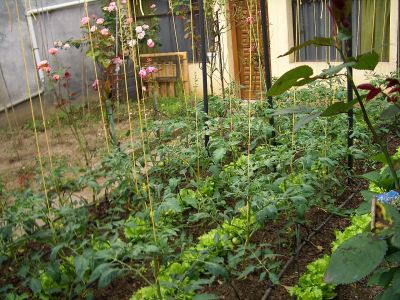Controlling flowering time in plants

Aretxabaleta apts and garden
By User:Vmenkov (Own work) [GFDL (http://www.gnu.org/copyleft/fdl.html) or CC BY-SA 3.0 (http://creativecommons.org/licenses/by-sa/3.0)], via Wikimedia Commons
A recent research project has found key proteins that control flowering time in plants, allowing an unprecedented understanding of this economically important process.
The process by which plants change from a vegetative to a reproductive state has intrigued horticulturalists and agrarian researchers for decades. Recent evidence suggests that chromatin-modifying proteins control this switch in biological states. Chromatin is the complex of DNA, RNA and proteins found in cell nuclei.
With EU funding, the 'Control of flowering time by chromatin remodelling' (FLOWERING CHROMATIN) project aimed to elucidate the control of this important biological function using several different biochemical and molecular biology tools.
Researchers focused on two chromatin-remodelling complexes, SWR1 and NuA4, which are common to most plants, animals and fungi. Specifically, FLOWERING CHROMATIN investigated proteins SWC4 and YAF9 (common to both SWR1 and NuA4 complexes in yeast) in Arabidopsis thaliana, a model flowering plant.
Studies of these proteins confirmed that they did indeed form part of a chromatin-remodelling complex in A. thaliana. Researchers found that both proteins regulate the expression of key genes that control flowering.
Scientists studied the mechanism of action further, finding that these flowering genes are controlled by altering the chromatin structure. Known as histone deposition, this alteration of chromatin leads to a large increase in gene activity in a particular area of the genome.
The findings of FLOWERING CHROMATIN will be useful in the search for improved crop performance in the face of global climate change. Further, this work improves scientists' understanding of chromatin regulation and remodelling in plants.
published: 2015-04-16

